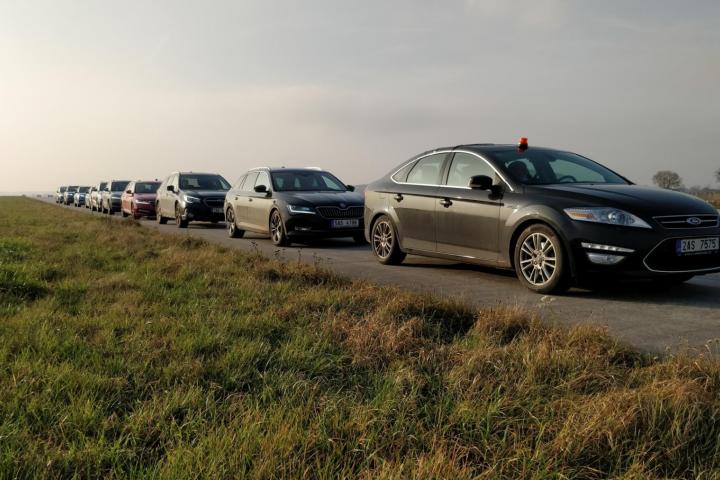
Under the leadership of doc. Zdeněk Hurák, a team from the Faculty of Electrical Engineering conducted a unique experiment with cars equipped with adaptive cruise control (ACC) at the airport in Mnichovo Hradiště on Friday, 6 December. Owners and drivers of twelve such vehicles responded to public call, making it an experiment with public participation. Scientists assembled a series of a total of 12 vehicles with the ACC on, driving behind the lead car on a two-kilometer track. The lead car’s task was to start with a smooth ride at 60 km / h, then a slight and brief braking to slow to 50 km / h and then accelerate again to the original cruising speed. The other cars had an adaptive cruise control set to 80 km / h. Scientists then recorded the reactions of these cars in the column, changing their speed.
Similarly, the aim of the experiment was not to compare individual cars with each other. Scientists did not conduct thorough (and time-consuming) experiments with individual vehicles. Only on the basis of such measurements would it be possible to reliably quantify the contribution rate of specific adaptive cruise controllers to the chain instability of the whole. However, it is not excluded that it will perform different for cars of different makes and types.
Significant improvements in the capabilities of these assistance systems with regard to their impact on traffic flow can only be expected after other features have been incorporated, such as the ability to detect the front brake light on one or more vehicles or even using vehicle-to-vehicle wireless communication (V2V) to receive information about what is going on ahead. In the international professional community, such systems, known as cooperative adaptive cruise control (CACC), are subject to very intensive research, and the first prototypes have been introduced in experimental operation.
Doc. Hurák's team wants to use the data measured in the experiment to develop more accurate models describing the dynamics of cars equipped with adaptive cruise control. These will be published in the professional press, however, the data from the experiments are already available to the public at: https://gitlab.fel.cvut.cz/aa4cc/acc/lkmh